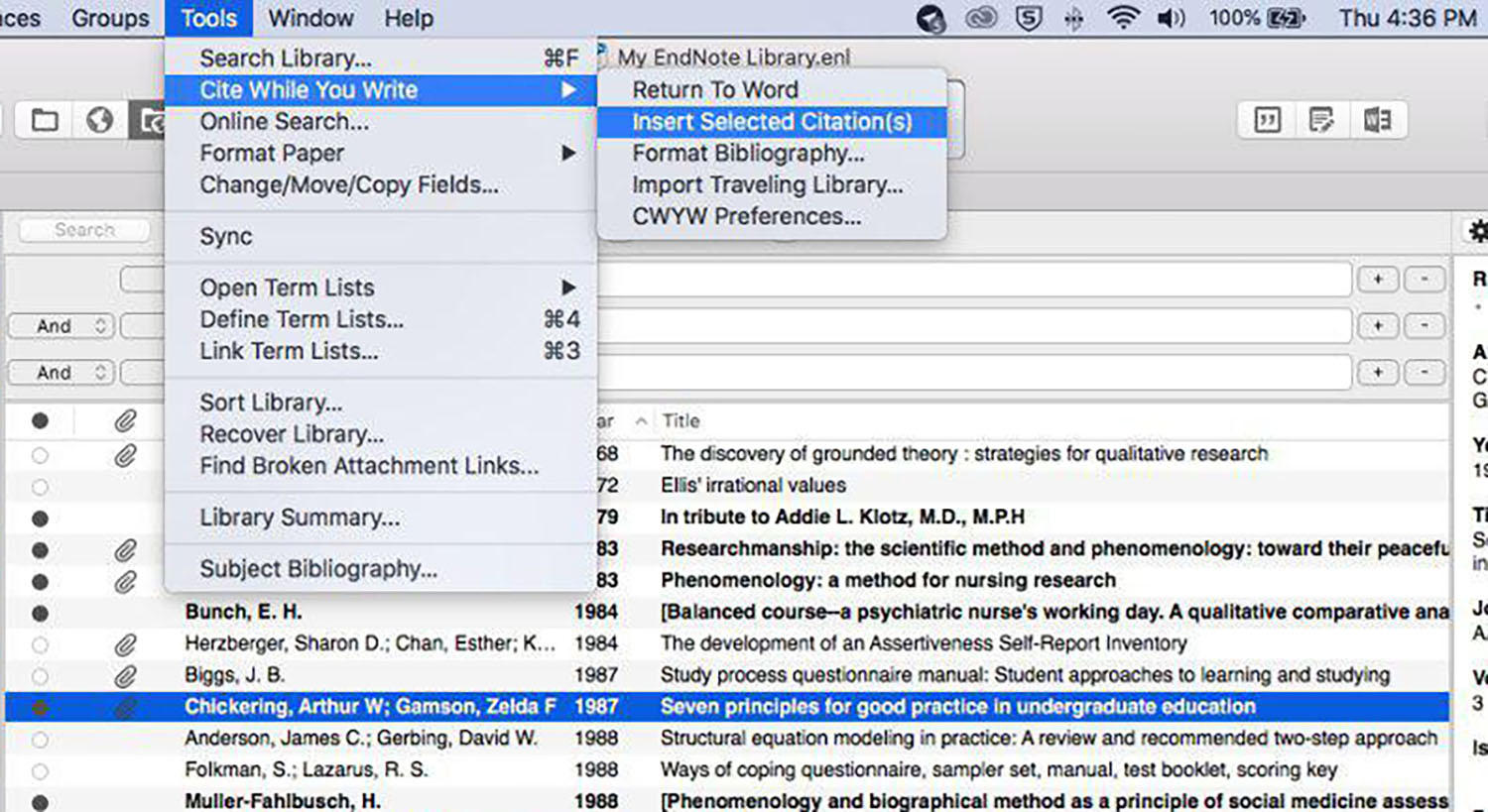

Be especially careful of capitalization, proper names, and dates.Always double check automated formatting against the rules and examples provided in style manuals and guides.Good referencing is one of the signs of good scholarship! A good reference also makes sure that you've included all the important information about a source, so that your reader can tell the difference between, for instance, two papers by the same author in the same year, or two books by the same title. When you know what to look for, it's easy to tell a journal article from a book chapter from a conference paper. You may change the style at any time as long as you have not converted the document to plain text.A citation/reference organizes the individual elements (author, year, book title etc.) of a citation into a consistent form. The corresponding reference(s) will be listed beneath References in the style you chose.

Enter search terms and the references containing the terms will be retrieved. Highlight the reference(s) you want to insert, then click the Insert button at the bottom of the popup window. If you choose the Search option, click on the Search button (the magnifying glass over a closing quotation mark).You may change the style at any time as long as you have not converted the document to plain text.

The corresponding reference(s) will be listed at the end of your paper. Highlight the reference(s) you want to insert, then click Tools>Cite While You Write> Insert Selected References OR ALT+2.

Below are the steps to citing while you write a paper in Word: CWYW (Cite While You Write) is EndNote's signature feature that makes citing easy. One of the main reasons people use EndNote is to cite references.


 0 kommentar(er)
0 kommentar(er)
